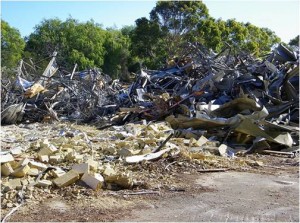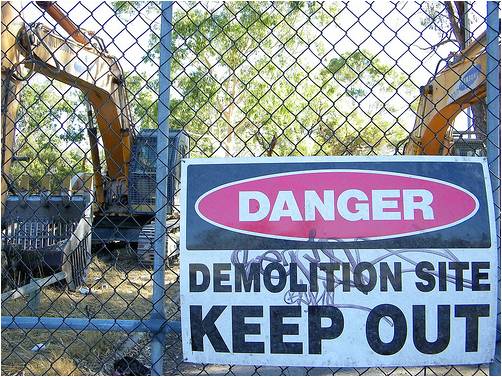
Most Useful Salvageable Materials from Demolition Sites
The United States produces 136 million tons of waste from construction and demolition (C&D) processes each year, much of which is tossed into landfills after use. Fortunately, industry leaders have discovered that many building materials are salvageable and can be recycled and reused. Not only does the reuse of these materials reduce landfill waste, but it also helps reduce project costs for both residential and industrial demolition and construction.

According to J.D. Elder, President of Elder Demolition in Portland, Oregon, “Because building materials made with recycled elements are often less expensive than their virgin counterparts, there’s a healthy demand for salvaged building elements.” These are some of the most useful salvageable materials that C&D professionals can reuse and recycle from demolition sites.
Lighting and Bathroom Fixtures
Fluorescent tubes are easy to recycle, and bathroom fixtures and light fixtures can often be reused in future construction projects. You should know that repurposed lighting and bathroom fixtures are potentially less energy-efficient than new fixtures. Carefully evaluate your construction project needs to strike an environmental and economic balance between energy conservation and waste reduction.
Used Wood
Even if the building that you’re demolishing is old and weathered, the wood may be able to be milled and processed to create new products. Used wood is often not graded to comply with new construction building codes. However, old wood can often be reprocessed to create flooring, countertops, and paneling. Make sure that your salvaged wood is approved by a qualified engineer for the specific load-bearing weight before beginning construction.
Asphalt and Concrete

Both asphalt and concrete are salvageable materials that can save construction companies a great deal of money. Some of the most salvageable materials you can find are asphalt shingles, which contain crude oil and can be transformed into pavement project material and cement kiln fuel. Approximately 140 million tons of concrete are recycled in the United States each year, often reused at the demolition site for new construction.
Steel
Steel is recycled more frequently than pretty much any other C&D material. Since steel doesn’t lose its strength upon recycling, it can be reused and repurposed for many years. The process of recycling steel produces fewer carbon emissions than extracting new steel, and you can find recycled steel in bridges, cars, buildings. The Steel Recycling Institute provides information about recycling resources, steel markets, and sustainability.
Other recyclable C&D that are easily recyclable include pallets, paper products, packaging, and metals. You may be able to reuse additional materials, such as furnishings, brick, railings, and cupboards. Keep in mind that construction and demolition waste must be kept separate from traditional garbage collection to avoid pollution violations and minimize the risk of hazardous waste emissions.
Learn more about the U.S. Environmental Protection Agency’s involvement in managing, reducing, reusing and recycling C&D debris on the EPA website. You can also get involved with ReDO, a nationwide nonprofit organization that provides information about the benefits of C&D reuse and helps companies redistribute materials too large for a single reuse center.
Photo credit: Michael Spencer via Flickr



